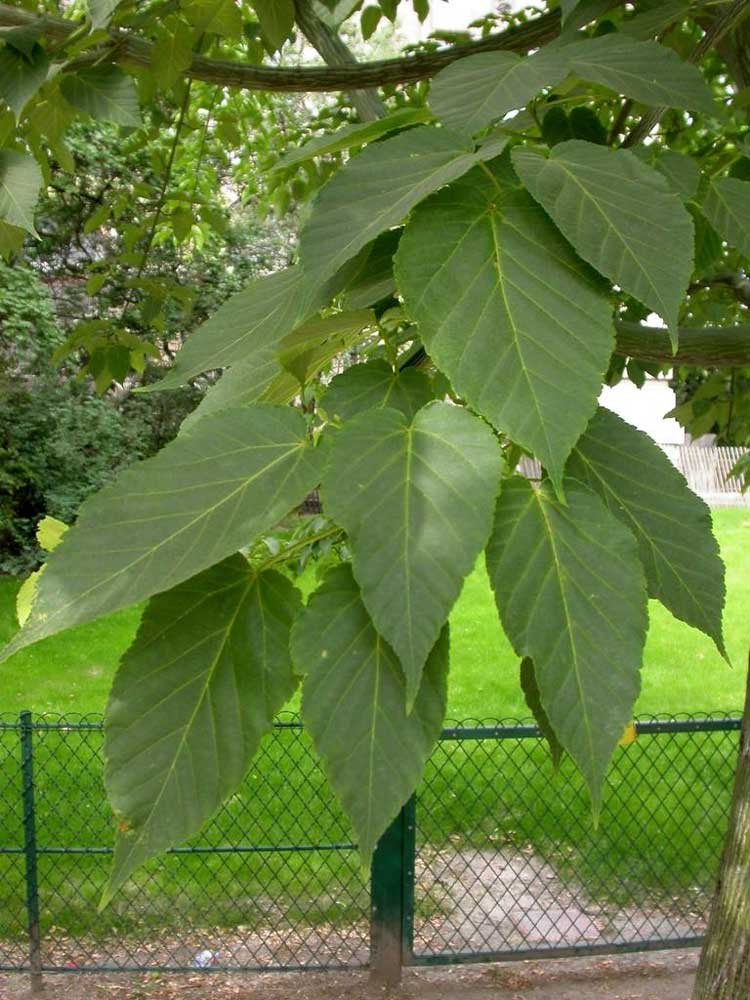
Acer davidii (*)
Classification System: APG IV
Superregnum: Eukaryota
Regnum: Plantae
Cladus: Angiosperms
Cladus: Eudicots
Cladus: Core eudicots
Cladus: Rosids
Cladus: Eurosids II
Ordo: Sapindales
Familia: Sapindaceae
Subfamilia: Hippocastanoideae
Tribus: Acereae
Genus: Acer
Species: Acer davidii
Subspecies: A. d. subsp. davidii – A. d. subsp. grosseri
Name
Acer davidii Franch., Nouv. Arch. Mus. Hist. Nat., sér. 2, 8: 212 (1885 publ. 1886).
References
Additional references
Murray, A.E., 1970. A monograph of the Aceraceae. Unpublished Ph.D. dissertation, The Pennsylvania State University. Reference page.
Gelderen, D.M. van, Jong, P.C.de & Oterdoom, H.J. 1994. Maples of the world. Timber Press, Portland, Or., 458 pp. ISBN 0-88192-000-2. Reference page.
Govaerts, R.H.A. 1995. World Checklist of Seed Plants 1(1, 2). 483, 529 pp. MIM, Deurne. ISBN 90-341-0852-X (issue 1) ISBN 90-341-0853-8 (issue 2). Reference page.
Hsu, T.Z., Chen, Y.S., Jong, P.C.de, Oterdoom, H.J. & Chang, C.S. 2008. Acer. Pp. 537 in Wu, Zh.Y. , Raven, P.H. & Hong, D.Y. (eds.), Flora of China. Volume 11: Oxalidaceae through Aceraceae. Science Press, Beijing & Missouri Botanical Garden Press, St. Louis, ISBN 978-1-930723-73-3. efloras PDF Reference page.
Links
Chen, Y., Gibbs, D. & Oldfield, S. 2018. Acer davidii. The IUCN Red List of Threatened Species 2018. IUCN Red List Category: Least Concern. DOI: 10.2305/IUCN.UK.2018-1.RLTS.T193540A2242947.en.
USDA, ARS, Germplasm Resources Information Network. Acer davidii in the Germplasm Resources Information Network (GRIN), U.S. Department of Agriculture Agricultural Research Service. Accessed: 7 January 2020.
Govaerts, R. et al. 2020. Acer davidii in Kew Science Plants of the World online. The Board of Trustees of the Royal Botanic Gardens, Kew. Published online. Accessed: 2020 January 7. Reference page.
International Plant Names Index. 2020. Acer davidii. Published online. Accessed: 7 January 2020.
Vernacular names
čeština: Javor Davidův
Deutsch: Davids-Ahorn
English: David's Maple
français: Érable du Père David
polski: Klon Dawida
slovenščina: Davidov javor
中文: 葛萝槭
Acer davidii, or Père David's maple, is a species of maple in the snakebark maple group. It is native to China, from Jiangsu south to Fujian and Guangdong, and west to southeastern Gansu and Yunnan.[2]
The tree was originally discovered by a Chinese person lost to history but a French priest Armand David who was in Central China as a missionary took the credit. It was re-discovered by Charles Maries during his visit to Jiangsu in 1878.
It is a small deciduous tree growing to 10–15 m tall with a trunk up to 40 cm in diameter, though usually smaller and often with multiple trunks, and a spreading crown of long, arching branches. The bark is smooth, olive-green with regular narrow pale vertical stripes on young trees, eventually becoming dull grey-brown at the base of old trees. The leaves are 6–18 cm long and 4–9 cm broad, with a petiole 3–6 cm long; they are dark green above, paler below, ovate, unlobed or weakly three-lobed, with a serrated margin. They turn to bright yellow, orange or red in the autumn. The flowers are small, yellow, with five sepals and petals about 4 mm long; they are produced on arching to pendulous 7–12 cm racemes in late spring, with male and female flowers on different racemes. The samara nutlets are 7–10 mm long and 4–6 mm broad, with a wing 2–3 cm long and 5 mm broad.[2][3][4]
Subspecies and cultivars
There are two subspecies,[2][4] often treated as a distinct species:[3][5]
Acer davidii subsp. davidii. Père David's maple. Bark greenish-brown with white stripes. Shoots pinkish-green. Leaf petiole pink to red; leaf margin usually single-serrate with variably-sized serrations.
Acer davidii subsp. grosseri (Pax) de Jong. Hers's maple (Acer grosseri Pax; syn. Acer hersii Rehd.)[6] - bark green with white to pale green stripes. Shoots green. Leaf petiole green; leaf margin more often three-lobed and double-serrate.
Along with A. rufinerve, the two subspecies of Père David's maple are among the most commonly cultivated snakebark maples. Both are relatively hardy and fast-growing.[4]
Among the cultivars of A. davidii are:-
'Canton' (a Dutch cultivar with a purplish hue to its green stripes)
'George Forrest' (a Scottish cultivar with large leaves and dark red young shoots - this cultivar has gained the Royal Horticultural Society's Award of Garden Merit)[7]
'Ernest Wilson' (a specimen of which may be viewed in the Westonbirt Arboretum in England)
'Serpentine' (a cultivar with distinctively small, narrow leaves)[4][5][8]
In some cases, these cultivars cannot be assigned to one subspecies or the other but are simply considered cultivars of A. davidii.[4]
References
The Plant List, Acer davidii Franch.
Flora of China (draft): Aceraceae
Rushforth, K. (1999). Trees of Britain and Europe. Collins ISBN 0-00-220013-9.
van Gelderen, C. J. & van Gelderen, D. M. (1999). Maples for Gardens: A Color Encyclopedia.
Mitchell, A. F. (1974). A Field Guide to the Trees of Britain and Northern Europe. Collins ISBN 0-00-212035-6
"Acer grosseri var. hersii". RHS. Retrieved 7 June 2020.
"Royal Horticultural Society Plant Selector - Acer davidii 'George Forrest'". Retrieved 23 February 2020.
"Acer 'Serpentine'". RHS. Retrieved 7 June 2020.
Retrieved from "http://en.wikipedia.org/"
All text is available under the terms of the GNU Free Documentation License

